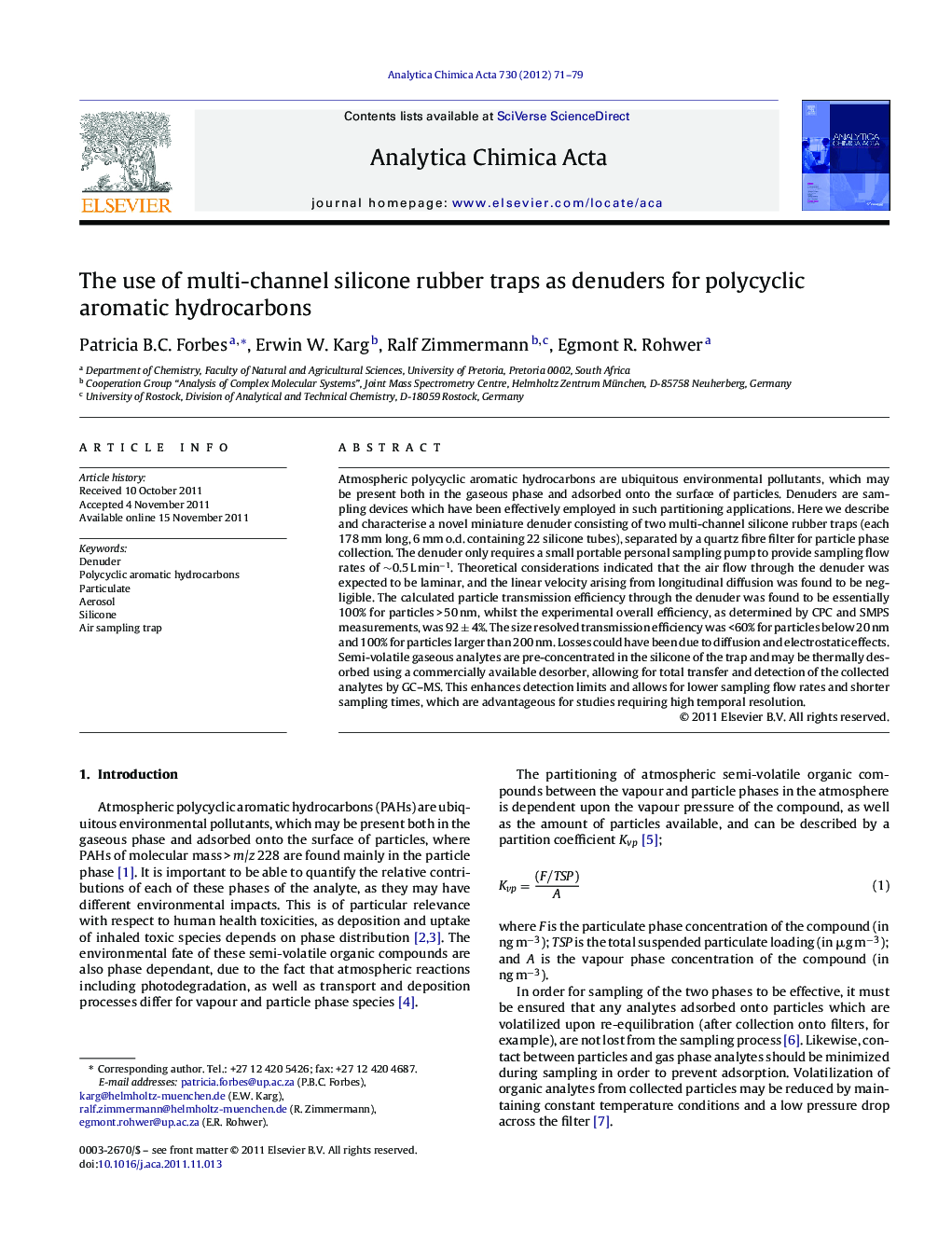| Article ID | Journal | Published Year | Pages | File Type |
|---|---|---|---|---|
| 1166435 | Analytica Chimica Acta | 2012 | 9 Pages |
Atmospheric polycyclic aromatic hydrocarbons are ubiquitous environmental pollutants, which may be present both in the gaseous phase and adsorbed onto the surface of particles. Denuders are sampling devices which have been effectively employed in such partitioning applications. Here we describe and characterise a novel miniature denuder consisting of two multi-channel silicone rubber traps (each 178 mm long, 6 mm o.d. containing 22 silicone tubes), separated by a quartz fibre filter for particle phase collection. The denuder only requires a small portable personal sampling pump to provide sampling flow rates of ∼0.5 L min−1. Theoretical considerations indicated that the air flow through the denuder was expected to be laminar, and the linear velocity arising from longitudinal diffusion was found to be negligible. The calculated particle transmission efficiency through the denuder was found to be essentially 100% for particles > 50 nm, whilst the experimental overall efficiency, as determined by CPC and SMPS measurements, was 92 ± 4%. The size resolved transmission efficiency was <60% for particles below 20 nm and 100% for particles larger than 200 nm. Losses could have been due to diffusion and electrostatic effects. Semi-volatile gaseous analytes are pre-concentrated in the silicone of the trap and may be thermally desorbed using a commercially available desorber, allowing for total transfer and detection of the collected analytes by GC–MS. This enhances detection limits and allows for lower sampling flow rates and shorter sampling times, which are advantageous for studies requiring high temporal resolution.
Graphical abstractFigure optionsDownload full-size imageDownload as PowerPoint slideHighlights► Two multi-channel silicone rubber traps with a quartz fibre filter form a miniature portable denuder. ► Gas and particle phase polycyclic aromatic hydrocarbons can be separately sampled and analysed. ► Calculated particle transmission efficiencies were 100% for particles >50 nm diameter. ► Experimental transmission efficiencies were 100% for particles >200 nm and <60% for those <20 nm. ► Short sampling intervals are possible which provides high temporal resolution for air pollution studies.
